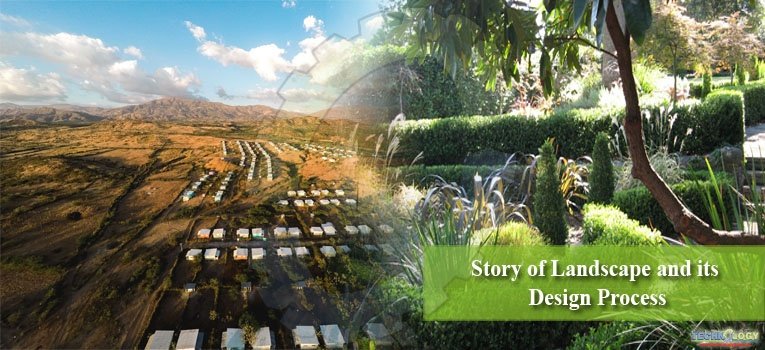A picture representing a section of natural, inland scenery, as of prairie, woodland, mountains and expanse of natural scenery seen by the eye in one view entitled as landscape.

Landscape is more than just a scenery.
“Land” means both a place and the people living there.
“Scape” means “to shape” and also mean association and partnership.
Landscape is a result of both action and interaction of natural and human factors.
- Physical elements of landform,
- Living elements of landcover
- Human elements
- Transitory elements
Landscape Art?
The depiction in art of landscapes, natural scenery. Especially art where the main subject is a wide view, elements arranged in to a coherent composition.
Cultural Landscape:
A landscape designed and created intentionally by man. An “associative cultural landscape” which may be valued because of the religious, artistic or cultural associations of the natural element.
Landscape Ecology:
The science of studying and improving relationships between ecological processes in the environment and particular ecosystems.
Landscape Planning:
A branch of landscape architecture. An activity concerned with reconciling competing land uses while protecting natural resources, significant natural, cultural resources.
Assessment:
A sub-category of environmental assessment concerned with quality assessment of the landscape.
Landscape Design:
- An independent profession and a design or an art tradition
- Practiced by landscape designers.
- Combining nature and culture.
Importance of Landscape:
- Support our health and well-being and encouraging physical outdoor activity and antidote to stress.
- Offers aesthetic enjoyment, escapism, tranqulity ,and as sense to belonging an area with a distinct and natural and cultural identity.
Landscape architecture?
Design of outdoor public areas, landmarks and structures to achieve environmental, social-behavioral and aesthetic outcomes.
Field incorporating in aspects of Botany, Horticulture, Fine arts, architecture, industrial design, environmental physcology, earth sciences, geography and ecology.
Landscape Architect:
Apply creative and technical skill, scientific, cultural and political knowledge in the planned arrangement of natural and constructed elements on the land integrating ecological sustainability. Resulting environments shall serve useful, aesthetic, safe and enjoyable purposes.
Some principles of landscape design:
Unity : It is the quality of oneness. Attracts and hold attention Starts with the story line and develop in the family analysis.
Color: Give greatest appeal and evokes the great response. Powerful in creating mood and feeling.
Line: Connects and defines the space, creating outdoor rooms.Use sweeping bold lines and curves rather than small zigzags and small wavy curves. Horizontal and spreading forms emphasis the lateral extent and breath of space.
Rounded forms allow for easy eye movement and create a pleasant undulation. Weeping forms lead the eye back to the ground. Pyramidal forms direct the eyes upward, so use sparingly.
Texture: Define as a relationship between the fiolage and the twig size, and the mass of plants.
Scale: Absolute scale relates the comparative value of landscape elements to a fixed structure.
Relative scale relates to comparative relative sizes or values of objects on the landscape.
- Balance:
Formal balance repeats the same left and right, giving stability, stateliness and dignity.
Informal balance differs from left to right giving curiosity, movement and feels alive.
Simplicity and Variety:
Is a degree of repetition rather than constant change, creating unity. Diversity and contrast in form, texture and color preventing monotony.
About Landscapes design process
- Research and Analysis
- Site Inventory
- Determining your needs
- Creating functional diagrams
- Developing conceptual design plans